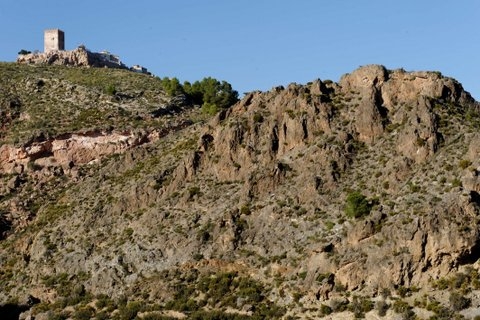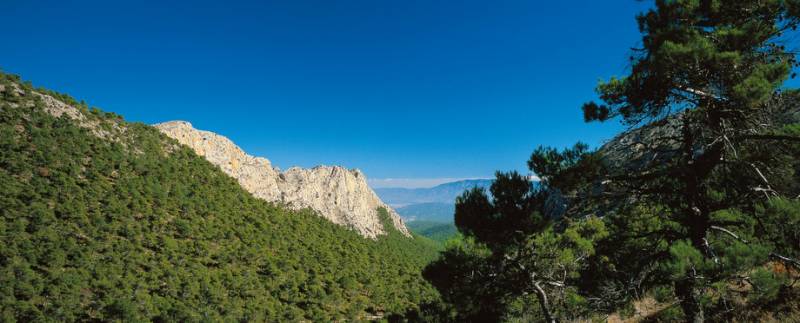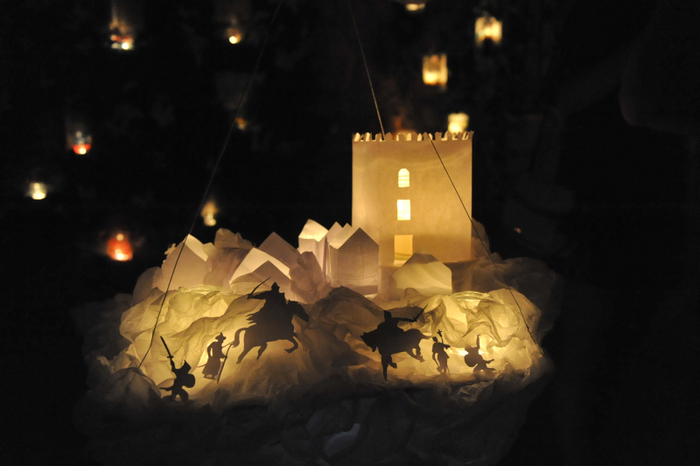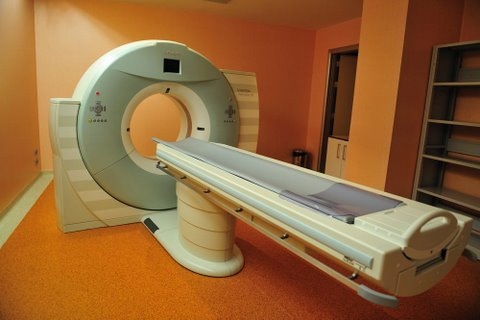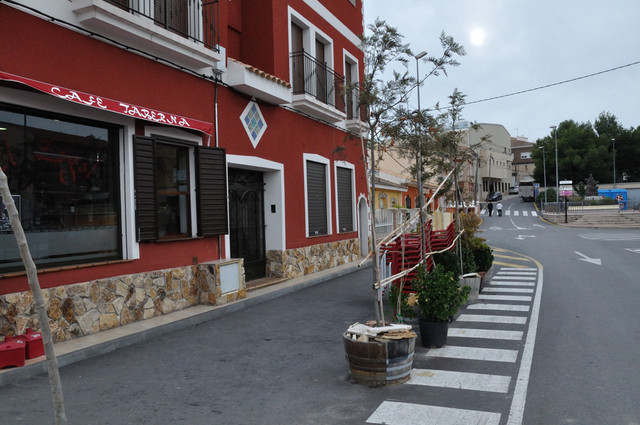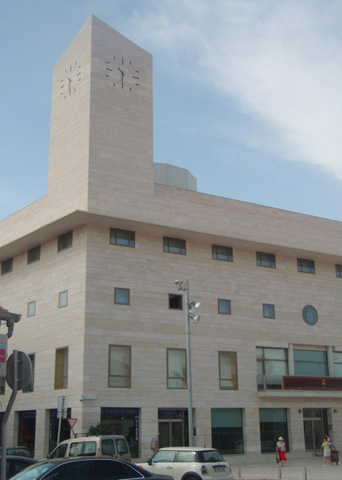- Region
- Águilas
- Alhama de Murcia
- Jumilla
- Lorca
- Los Alcázares
- Mazarrón
- San Javier
-
ALL AREAS & TOWNS
- AREAS
- SOUTH WEST
- MAR MENOR
- MURCIA CITY & CENTRAL
- NORTH & NORTH WEST
- TOWNS
- Abanilla
- Abarán
- Aguilas
- Alamillo
- Alcantarilla
- Aledo
- Alhama de Murcia
- Archena
- Balsicas
- Blanca
- Bolnuevo
- Bullas
- Cañadas del Romero
- Cabo de Palos
- Calasparra
- Camping Bolnuevo
- Campo De Ricote
- Camposol
- Canada De La Lena
- Caravaca de la Cruz
- Cartagena
- Cehegin
- Ceuti
- Cieza
- Condado de Alhama
- Corvera
- Costa Cálida
- Cuevas De Almanzora
- Cuevas de Reyllo
- El Carmoli
- El Mojon
- El Molino (Puerto Lumbreras)
- El Pareton / Cantareros
- El Raso
- El Valle Golf Resort
- Fortuna
- Fuente Alamo
- Hacienda del Alamo Golf Resort
- Hacienda Riquelme Golf Resort
- Isla Plana
- Islas Menores & Mar de Cristal
- Jumilla
- La Azohia
- La Charca
- La Manga Club
- La Manga del Mar Menor
- La Pinilla
- La Puebla
- La Torre
- La Torre Golf Resort
- La Unión
- Las Palas
- Las Ramblas
- Las Ramblas Golf
- Las Torres de Cotillas
- Leiva
- Librilla
- Lo Pagan
- Lo Santiago
- Lorca
- Lorquí
- Los Alcázares
- Los Balcones
- Los Belones
- Los Canovas
- Los Nietos
- Los Perez (Tallante)
- Los Urrutias
- Los Ventorrillos
- Mar De Cristal
- Mar Menor
- Mar Menor Golf Resort
- Mazarrón
- Mazarrón Country Club
- Molina de Segura
- Moratalla
- Mula
- Murcia City
- Murcia Property
- Pareton
- Peraleja Golf Resort
- Perin
- Pilar de la Horadada
- Pinar de Campoverde
- Pinoso
- Playa Honda
- Playa Honda / Playa Paraíso
- Pliego
- Portmán
- Pozo Estrecho
- Puerto de Mazarrón
- Puerto Lumbreras
- Puntas De Calnegre
- Region of Murcia
- Ricote
- Roda Golf Resort
- Roldan
- Roldan and Lo Ferro
- San Javier
- San Pedro del Pinatar
- Santiago de la Ribera
- Sierra Espuña
- Sucina
- Tallante
- Terrazas de la Torre Golf Resort
- Torre Pacheco
- Totana
- What's On Weekly Bulletin
- Yecla


- EDITIONS:
 Spanish News Today
Spanish News Today
 Alicante Today
Alicante Today
 Andalucia Today
Andalucia Today
article_detail
Date Published: 31/03/2012
Aledo castle, the Torre del Homenaje or medieval keep
The Torre del Homenaje in Aledo and the castle walls
Aledo occupies a strategically advantageous position, seated on a rocky outcrop with views across the mountains of the Sierra Espuña and the Sierra de La Tercía as well as the plain between the town and the Mediterranean coast.
This enabled its occupants to effectively control movements of traffic and merchandise, maintaining a tight grip on any activity which took place, and also controlling communications: for more historical background click History of Aledo.
The location was sparsely populated before the end of the 9th century, with just a handful of Roman villas discovered in the area indicating agricultural activity, and the first documented mention of the settlement dates from the year 896.
713 AD, the Moors invade Spain
The Moors had invaded Spain, sweeping across the south from Cadíz, and by 713AD the area which included Aledo had come under their control following an agreement with the Visigoth overlord, Theudimer (or Tudmir).
Tudmir agreed to govern the area on behalf of the Moors and the area was named after him. According to the Arab geographer Al-Idrisi, it included Murcia, Orihuela, Cartagena, Mula, Lorca and Chinchilla, with Lorca as the main administrative centre.
However, even within the ranks of the invaders there were power struggles and infighting, and this first mention of Aledo in 896 is in a document relating to an expedition sent by the Emir Abd Allah from Córdoba to crush a rebellion led by Daysam ben Ishaq in Tudmir.
The first fortification in Aledo
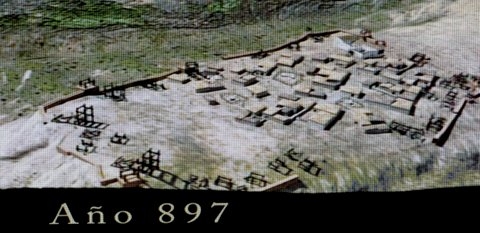 The early fortification mentioned in 896 AD was demolished to build a more substantial and important structure, a residential complex contained within a walled perimeter, typical of the fortresses built by the Moors throughout their occupation, providing strategically important power centres from which they could control their territory.
The early fortification mentioned in 896 AD was demolished to build a more substantial and important structure, a residential complex contained within a walled perimeter, typical of the fortresses built by the Moors throughout their occupation, providing strategically important power centres from which they could control their territory.
The structure of the town of Aledo is essentially still contained inside the original walls of the city, and the streets built on the same plan.
However, by the end of the 11th century the Catholic Reconquista of southern Spain was underway, as Castilla and Aragon started to move southwards in a bid to claim the territories ruled by the Moors. The two rival kingdoms moved south, the south-western flank headed by Alfonso VI of Castilla, who took Toledo in 1085. In 1086 Aledo was taken by the famed Castilian knight García Jiménez, who used it as a strategic base for forces who carried out raids in Murcia, Almería, Granada and Jaén. Aledo became the main base for all Christian troops in the south-east of Spain, and the main stronghold of the Reconquista forces of Alfonso VI.
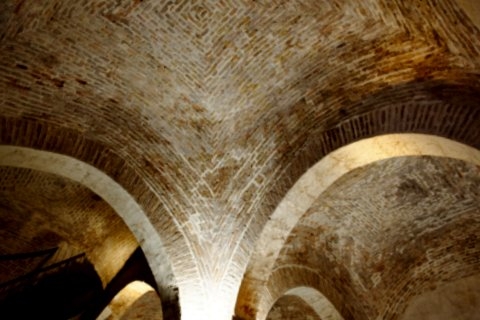 These forces suffered heavy defeat at the hands of the Moors during the Battle of Sagrajas in 1086 but retreated to their strongholds, including Aledo. This made the castle, described by Ibn Al Abbar as “The Great Impregnable”, the focal point for counter-attacks, and in 1092 Moorish forces laid siege to Aledo with towers, ditches, palisades and siege engines.
These forces suffered heavy defeat at the hands of the Moors during the Battle of Sagrajas in 1086 but retreated to their strongholds, including Aledo. This made the castle, described by Ibn Al Abbar as “The Great Impregnable”, the focal point for counter-attacks, and in 1092 Moorish forces laid siege to Aledo with towers, ditches, palisades and siege engines.
However the defences were so strong that the stand made by the inhabitants was threatened only by hunger and the onset of winter. They held out until Alfonso VI himself arrived with his army, causing the retreat of the Moorish forces, but when he entered the fortress the King found that the walls had been mostly destroyed and the garrison reduced to just a couple of hundred men. He had two choices: rebuild at great expense or abandon the garrison.
He chose the latter option and ordered that the fortress be torn down and burned, leaving Aledo to return to the control of the Moors. A replacement fortress was rebuilt on the site and the walls repaired.
The Order of Santiago
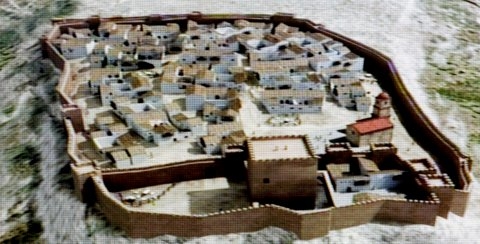
In 1243 Castilla finally gained control of the area when Prince Alfonso, later to become King Alfonso X signed the Treaty of Alcaraz. The rights of the Moorish population would be respected - in theory, at least - but taxes would be paid to Castilla, and although much of the population accepted the transition the fortresses of Lorca, Mula, Aledo and Cartagena refused the terms of the surrender and had to be subdued by force. Aledo fell to the Christians in 1244.
On 14th April 1257 Alfonso X “El Sabio” awarded Aledo to the Order of Santiago, whose Master at the time was Pelay Pérez Correa, and the town was to be closely linked to the Order for more than five hundred years.
During the next 200 years it remained an important key defensive position for the Knights of Santiago, strategically positioned close to the borders with the last remaining Moorish Kingdom in Spain: Granada.
During the 13th and 14th centuries the castle was extended and consolidated and the 19.3-metre-high Torre del Homenaje or keep was built as a symbol of power watching over the surrounding countryside.
The Reconquista and transfer to Totana
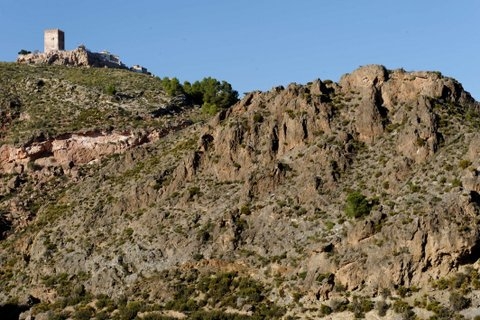
As the Catholic Reconquista of Spain gained pace, Granada finally fell to the forces of Isabella and Ferdinand, the Catholic Monarchs, who united Spain and drove out the Moors in 1492. From this point on, Aledo ceased to watch over a border and as time moved on the town and castle declined in importance and the agricultural settlement of Totana became the population centre. Although the castle was the scene of further action during uprisings in the 16th century and the War of Independence in 1808, its value as a strategic stronghold declined as the protective role of the castle ceased to be of importance, and Aledo was virtually abandoned.
Even today the town has only around 1,000 inhabitants, although the castle is enjoying a new lease of life as a tourist attraction: a perfect location for a drive out into the Sierra Espuña, an ideal place to stop for a walk and admire the views.
Following the transfer of the Knights of Santiago and administrative power to Totana, much of the external castle structure fell into disuse, but the tower remained, It has three floors, hosting an Interpretation Centre which gives more information about the structure of the Order of Santiago and the soldiers who would have lived in this location, and boasting a spectacular ceiling structure.
Alongside there is the start of a geological route which winds down from the castle through time, revealing fascinating fossils in the rocks upon which the castle is built.
Opening Hours
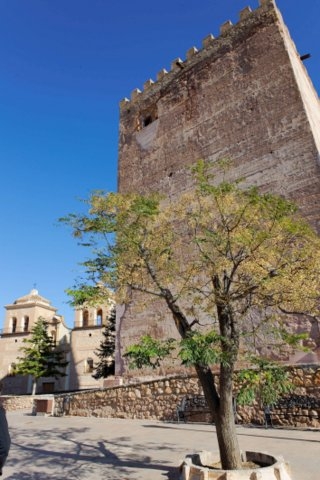 The listed visiting hours are on weekdays from 10.45 to 13.30 and on the first Sunday of every month from 11.00 to 13.30, but it is highly advisable to ring the tourist office number first if planning a special trip. (696 962116 / 968 484422).
The listed visiting hours are on weekdays from 10.45 to 13.30 and on the first Sunday of every month from 11.00 to 13.30, but it is highly advisable to ring the tourist office number first if planning a special trip. (696 962116 / 968 484422).
Entrance fee
There is a small entrance fee, which is vital to help the council maintain this facility open.
Don't miss!
The view from the top of the keep is spectacular but may unnerve those with a fear of heights. Be warned: the climb is a testing one!
On the ground floor is a video room offering insights into the history of the castle and town. A particularly interesting video relates to the water collection arrangements which show how the Pozo de los Moros functioned.
What else is nearby?
Don't miss the Picota, or pillory, which is located just a few metres down the hill, along the geological route.
The Church of Santa María La Real is also worth visiting, but it is open only on Sunday mornings for Mass. It contains two sculptures by Francisco Salzillo, and two other important early sculptures.
Address
Plaza del Castillo, s/n 30859 ALEDOTel: 968 484 422
Mobile: 696 962 116
Mobile: 696 962 116
Loading

Oficina de Turismo de Aledo
The tourist information office of Aledo is located within the Torre del Homenaje, the keep of the castle at the top of the old town, and although it is possible to drive to within just a few metres of the tower and park in the streets just below, this can be an unnerving experience for those unaccustomed to driving in narrow streets. It may be advisable to park lower down in the town close to the Town Hall (Ayuntamiento) and walk 5 minutes up to the castle.
 Aledo is a hilltop town, originally built by the Moors and then rebuilt by the Christian forces of the Reconquista, who took this area during the 13th century and converted it into a Christian stronghold from which to continue their fight to claim all of Spain for a further 250 years.
Aledo is a hilltop town, originally built by the Moors and then rebuilt by the Christian forces of the Reconquista, who took this area during the 13th century and converted it into a Christian stronghold from which to continue their fight to claim all of Spain for a further 250 years.
 The tower is well worth a visit for the views alone, although those with an interest in geology or fossils will also find the 20 million year walk back in time down into the valley below of great interest, as the rock upon which the castle is built is renowned internationally as a location of geological interest.
The tower is well worth a visit for the views alone, although those with an interest in geology or fossils will also find the 20 million year walk back in time down into the valley below of great interest, as the rock upon which the castle is built is renowned internationally as a location of geological interest.
Aledo also contains the only surviving Picota, or pillory, in the Region of Murcia, as well as a church, the Iglesia de Santa María Real, containing two sculptures by the baroque master Francisco Salzillo. It is also within the Sierra Espuña regional park and is a good stop-off point if heading up into the mountains, and the views from the church plaza and tower are spectacular.
 On 6th January it is the scene of the traditional Auto de los Reyes Magos, a musical nativity play which takes place in the streets of the town with the participation of donkeys and many of the local townspeople.
On 6th January it is the scene of the traditional Auto de los Reyes Magos, a musical nativity play which takes place in the streets of the town with the participation of donkeys and many of the local townspeople.
The tourist office is open only when the tower is open, so for enquiries at other times contact the Town Hall on 968 484422 (alcaldia@aledo.es).
For more information visit the Aledo section of Murcia Today.
View Aledo, Murcia in a larger map
article_detail
Contact Murcia Today: Editorial 000 000 000 /
Office 000 000 000


